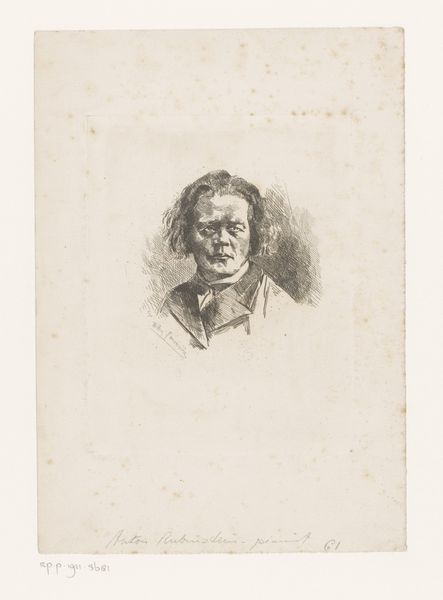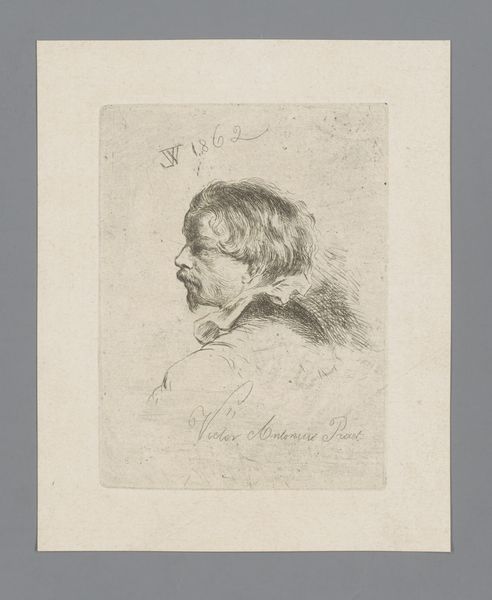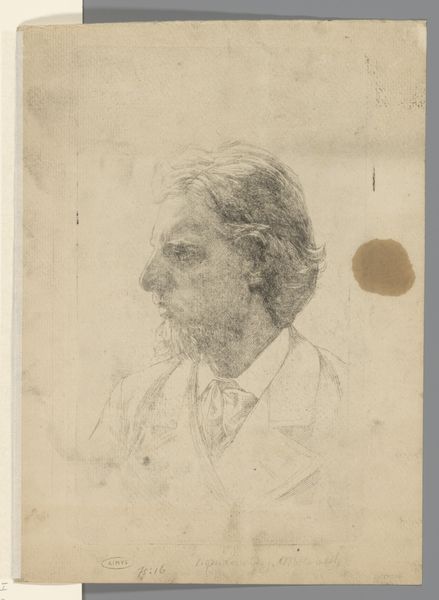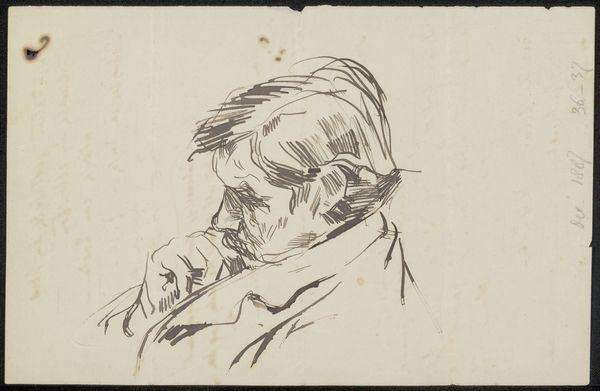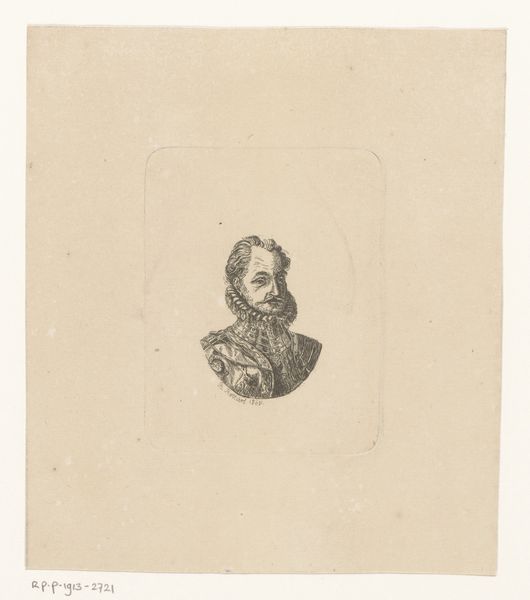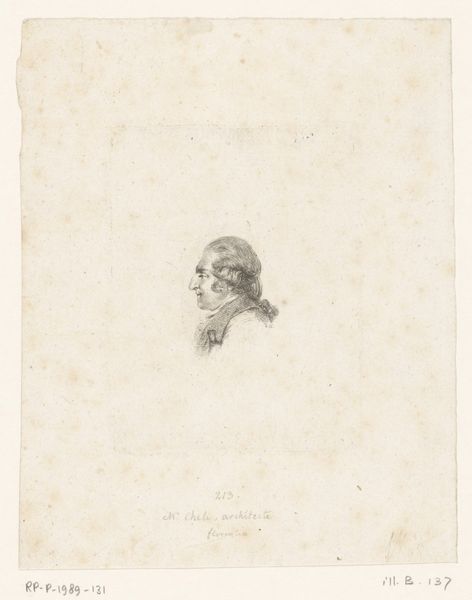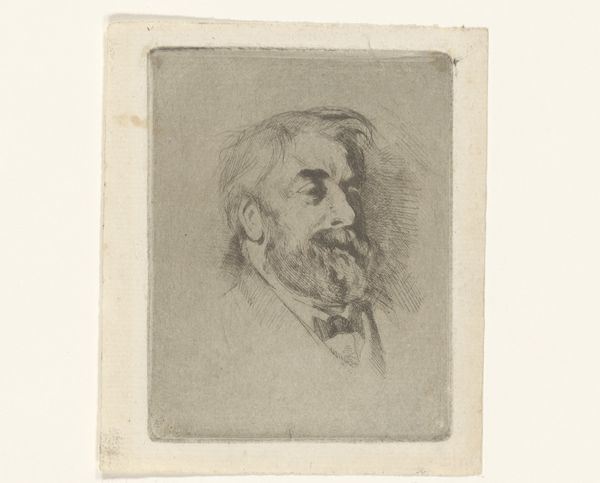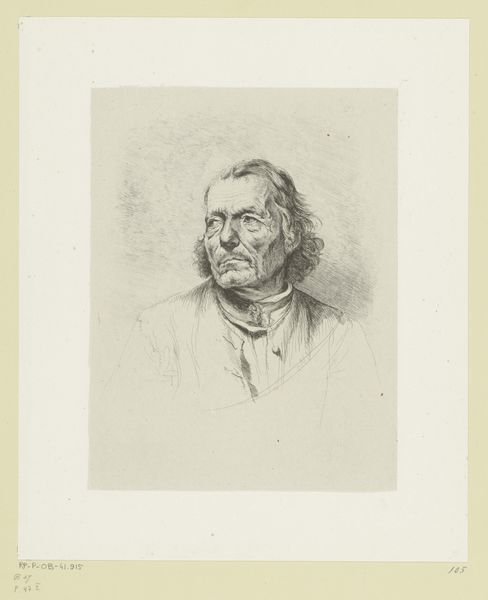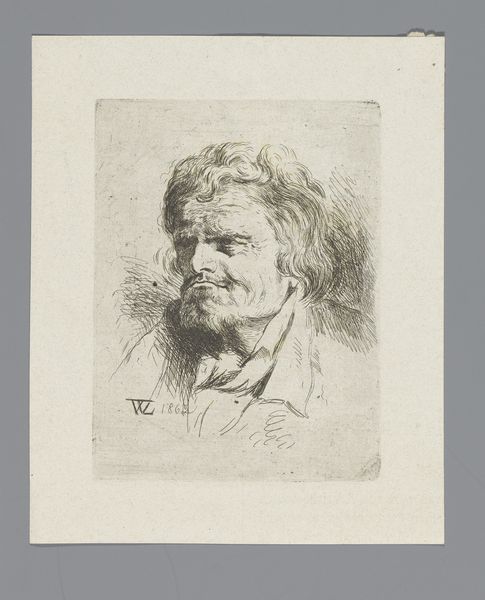
drawing, pencil
#
portrait
#
drawing
#
romanticism
#
pencil
#
realism
Dimensions: height 244 mm, width 163 mm
Copyright: Rijks Museum: Open Domain
Curator: Let's turn our attention to this striking portrait, "Man met hoofd geleund tegen hand," created by Gerhardus Fredericus Eilbracht, likely between 1844 and 1854. It currently resides here at the Rijksmuseum. Editor: My first impression is one of deep introspection. The dark lines against the aged paper evoke a powerful sense of contemplation, a weightiness in the subject's posture. Curator: Indeed. Consider the material realities: the pressure applied to the pencil, the labour involved in rendering the details of the ruffled collar, versus the implied idleness suggested by his pose. One could speculate about the sitter's role in society, or even about Eilbracht's. Was this commissioned? What were the economic factors involved? Editor: Absolutely, and let's also look at the interplay of light and shadow here. The artist has skillfully modeled the face to give it depth, especially around the eyes, imbuing the work with this almost tangible aura of seriousness, all achieved through tone. Notice the detail in the hair contrasted against the less detailed body, keeping the face as the focal point of the artwork. Curator: The materials themselves speak to accessibility. Pencil drawings were comparatively inexpensive, and were they reproducible at the time? This work potentially reached a broader audience. This resonates with a movement towards greater access to visual representations beyond just painted portraits for the wealthy elite. How does that accessibility change the artwork’s potential for generating narratives of, or empathy with, working class men? Editor: Yes, and how do you think that context intersects with romanticism? We have the trappings of realism with a clear romanticisation of emotional depth in the way the artwork centers around the thoughtful nature of the subject’s gaze and pose. The gaze has a captivating weight that moves through time, offering viewers insight into the person portrayed. Curator: Precisely! This melding is an ideal of both movements, both finding ground and meeting as one, showcasing their impact in the field. Editor: After that, I think my biggest takeaway comes from realizing how a few strategic lines and gradations of tone can evoke so much narrative power. Curator: And my reflections return me to its production—this seemingly simple portrait carries so much socio-economic and historic complexity tied to 19th-century labour and access to artistry.
Comments
No comments
Be the first to comment and join the conversation on the ultimate creative platform.
